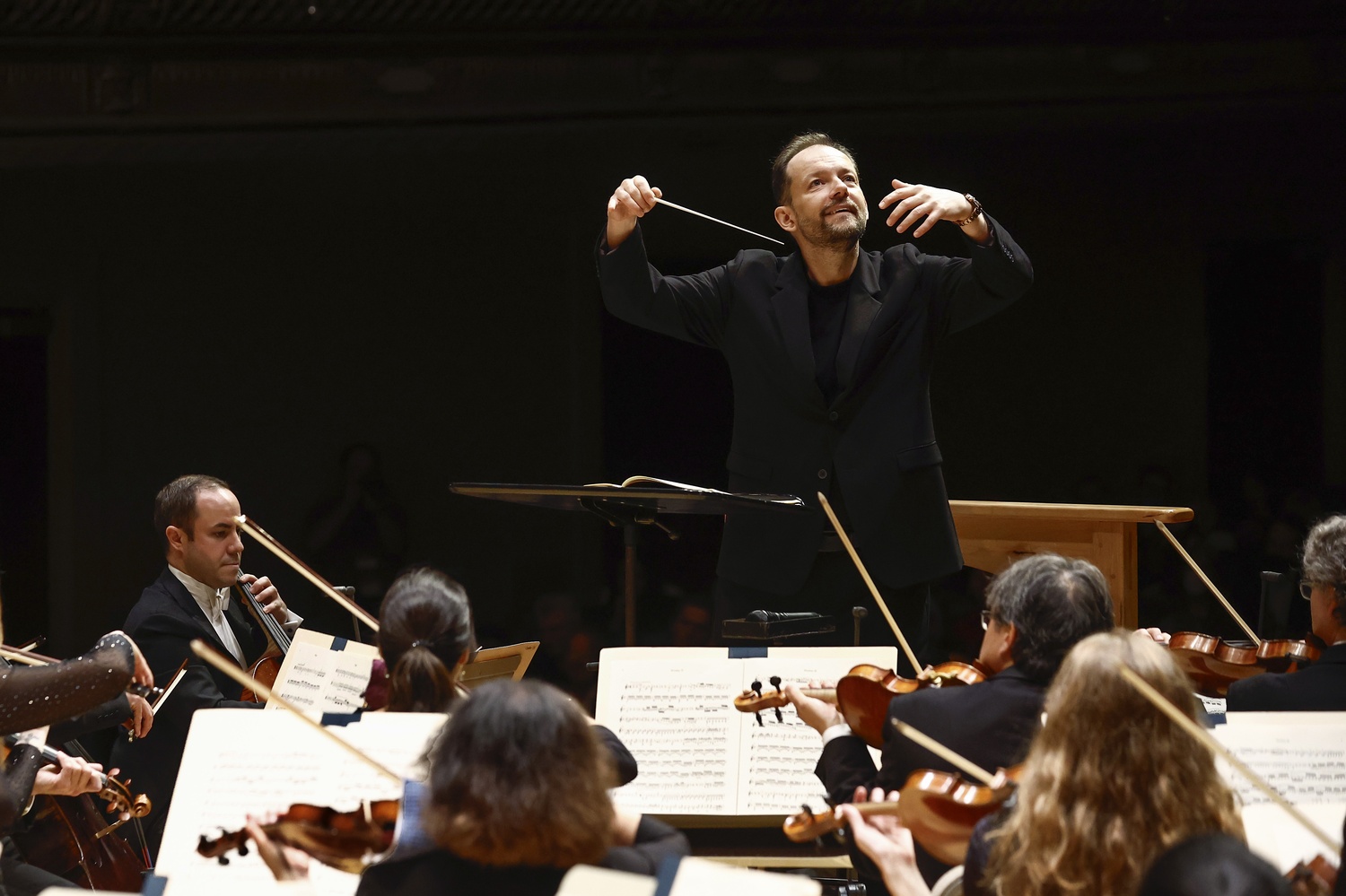
News
Summers Will Not Finish Semester of Teaching as Harvard Investigates Epstein Ties

News
Harvard College Students Report Favoring Divestment from Israel in HUA Survey

News
‘He Should Resign’: Harvard Undergrads Take Hard Line Against Summers Over Epstein Scandal

News
Harvard To Launch New Investigation Into Epstein’s Ties to Summers, Other University Affiliates

News
Harvard Students To Vote on Divestment From Israel in Inaugural HUA Election Survey
BSO Presents Mozart and Strauss: A Heroic Evening of Musical Conviction

From Sept. 25 to 27, the Boston Symphony Orchestra presented a concert featuring Wolfgang Amadeus Mozart’s “Symphony No. 41 in C,” more commonly known as the “Jupiter Symphony,” and Richard Strauss’ tone poem “Ein Heldenleben.” A powerful pairing featuring both composers at the apotheosis of their powers, BSO’s Music Director Andris Nelsons led the orchestra to a triumphant performance of both contrasting works.
The “Jupiter Symphony” was Mozart’s last, and it is a glorious endpoint in Mozart’s trajectory as a composer of symphonies. Taking after his legendary mentor Joseph Haydn, Mozart ingeniously developed the genre of the symphony during his brief but fruitful life, only for it to be picked up by Beethoven in a span of decades and brought to stratospheric heights. His “Jupiter Symphony” has since remained immortalised in a long tradition of symphonies, remembered for its Beethovenian breadth and force before Beethoven even took the world by storm.
Nelsons led the orchestra through the first movement in a spritely, fast tempo. Stepping back from conducting at certain moments, he allowed the music to speak for itself without overconducting, with its cascades of strings and winds. His carefully controlled strokes brought out the different musical threads, giving the movement its alluring, full-bodied sound. The second movement offered respite from the fireworks of the first; the mellow and translucent string sonority was some of the BSO’s finest work that evening.
The third movement introduced an abrupt change in tone: a playful menuetto closely resembling an Austrian Ländler. Its chromatic theme was duly highlighted throughout the course of the movement, and Nelsons delighted in its harmonic meanderings and rhythmic aberrations. The last movement, demonstrating Mozart’s expert fugal writing, was also handled with delicacy despite its gargantuan scale. The thematic counterpoint was well brought out by Nelsons, who powered through the rich texture of the work to much acclaim.
Strauss’ “Ein Heldenleben” (“A Hero’s Life”) followed after intermission, a fascinating work that often came accompanied by accusations of the composer’s egotism for its ambitious scale and subject matter. The instrumental forces on the stage swelled to nearly twice their size, complete with eight horns, thanks to Strauss’ famous love of the brass sonority. This was all in service to the narrative of the piece: a serious, majestic counterpart to his other tone poem, “Don Quixote” (1897).
Inspired by his own life, Strauss’ work is divided into six sections: “the hero, the hero’s adversaries, his life’s companion, his battle against a world of indifference, his works of peace, and his retirement from the world.” Strauss was as monumental a figure in life as in music; he was married to tempestuous soprano and his artistic muse Pauline de Ahna, who bore their only child, providing both a romantic and domestic anchor in his life. Strauss’ life was beset by struggles, occupying important posts in Germany during its descent into Nazism, such as head of the Reichsmusikkammer and principal conductor of the Bayreuth Festival which led to accusations of collaboration with the Nazi regime.
Ironically, the work, written when Strauss was but 34 years old, seemed to foreshadow all these developments that would later befall his life. A work of profound introspection as much as it was an expression of his own individuality to the outside world, it follows a common theme throughout most of Strauss’ tone poems: a male protagonist in confrontation with an uncomprehending outer world.
Set in the key of E-flat major, with its allusions to other heroic works like Beethoven’s “Eroica Symphony,” the harmonic groundwork was magnificently laid in the first movement by the orchestra. With a dignified, unified tone from the lower strings, it soon morphed into its ecstatic, lush texture with winds and brass at the front and center of the hero’s charge into the world. The second movement, depicting the hero’s foes, was marked by the cacophony of dissonant woodwinds, as ominous as it was charade-like.
Next, concertmaster Nathan Cole shone in the solo violin material of the third movement, depicting the hero’s feminine companion. His delicate phrasing and touch created a sparkling, mercurial conversation between the violin, lower strings, horns, and harp. Zooming out even further, the contrast between orchestra and soloist moments and the tutti sections was reminiscent of capricious lovers’ banter, even amounting to erotic climax that dissolved into blissful evanescence, a showing of Strauss’s salacious musical hand.
The rest of the tone poem was magnificently delivered, with the fourth movement’s alternation between settledness and subversion and the hero’s battle against an unfeeling world. A piece of many moods, the wall of martial furor in the latter half of the piece melted into romantic idealism, portraying the hero’s duality of existence. The hero’s final retirement from the world, ending his journey not with a bang but with a contented sigh, was achieved with Nelsons guiding the orchestra to the work’s conclusion, with its return to the E-flat major tonality.
Overall, the BSO delivered a memorable night of works heroic in their own right, crown jewels of the orchestral repertoire that could hardly be portrayed better by the fineness of the BSO’s musical sensibilities.
—Staff writer Lara R. Tan can be reached at lara.tan@thecrimson.com.
Want to keep up with breaking news? Subscribe to our email newsletter.
